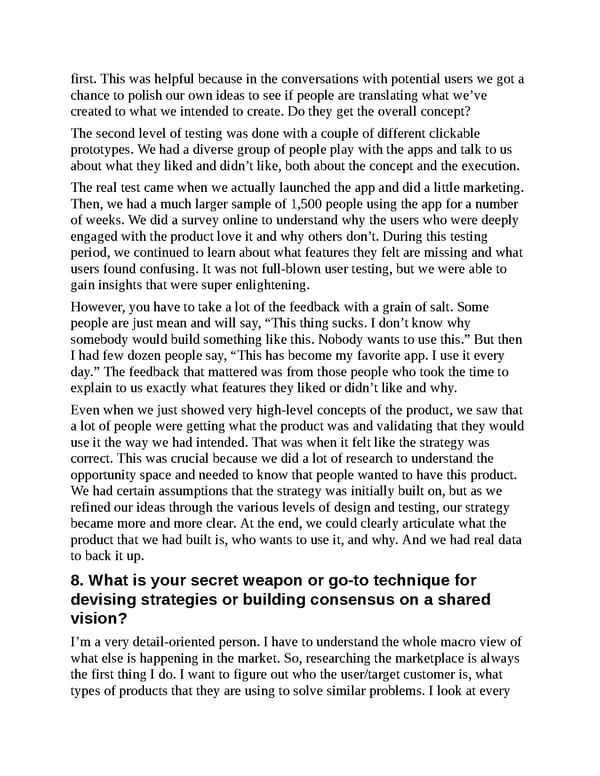first. This was helpful because in the conversations with potential users we got a chance to polish our own ideas to see if people are translating what we’ve created to what we intended to create. Do they get the overall concept? The second level of testing was done with a couple of different clickable prototypes. We had a diverse group of people play with the apps and talk to us about what they liked and didn’t like, both about the concept and the execution. The real test came when we actually launched the app and did a little marketing. Then, we had a much larger sample of 1,500 people using the app for a number of weeks. We did a survey online to understand why the users who were deeply engaged with the product love it and why others don’t. During this testing period, we continued to learn about what features they felt are missing and what users found confusing. It was not full-blown user testing, but we were able to gain insights that were super enlightening. However, you have to take a lot of the feedback with a grain of salt. Some people are just mean and will say, “This thing sucks. I don’t know why somebody would build something like this. Nobody wants to use this.” But then I had few dozen people say, “This has become my favorite app. I use it every day.” The feedback that mattered was from those people who took the time to explain to us exactly what features they liked or didn’t like and why. Even when we just showed very high-level concepts of the product, we saw that a lot of people were getting what the product was and validating that they would use it the way we had intended. That was when it felt like the strategy was correct. This was crucial because we did a lot of research to understand the opportunity space and needed to know that people wanted to have this product. We had certain assumptions that the strategy was initially built on, but as we refined our ideas through the various levels of design and testing, our strategy became more and more clear. At the end, we could clearly articulate what the product that we had built is, who wants to use it, and why. And we had real data to back it up. 8. What is your secret weapon or go-to technique for devising strategies or building consensus on a shared vision? I’m a very detail-oriented person. I have to understand the whole macro view of what else is happening in the market. So, researching the marketplace is always the first thing I do. I want to figure out who the user/target customer is, what types of products that they are using to solve similar problems. I look at every
 UX Strategy: How to Devise Innovative Digital Products that People Want Page 305 Page 307
UX Strategy: How to Devise Innovative Digital Products that People Want Page 305 Page 307